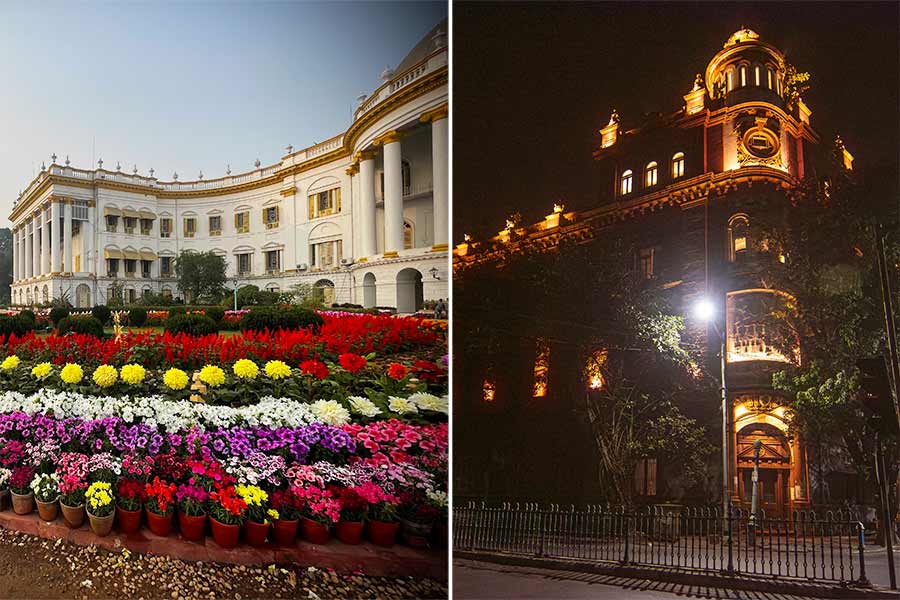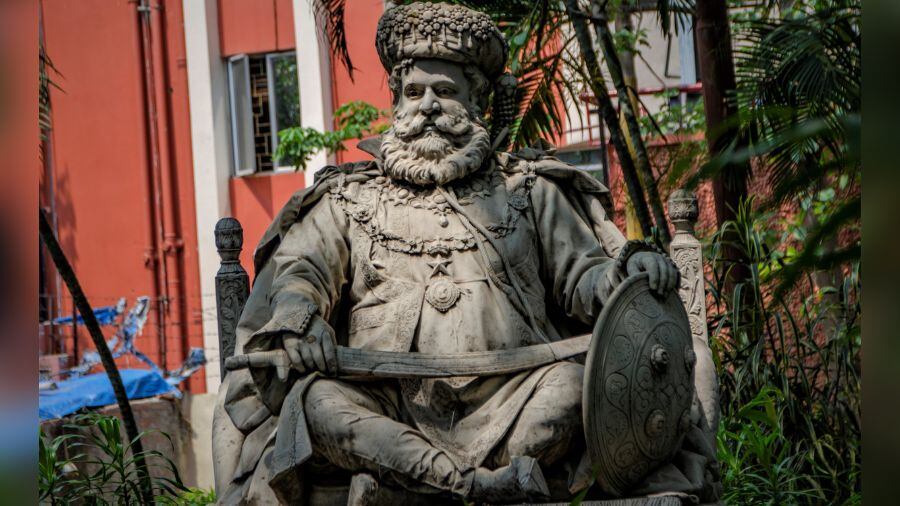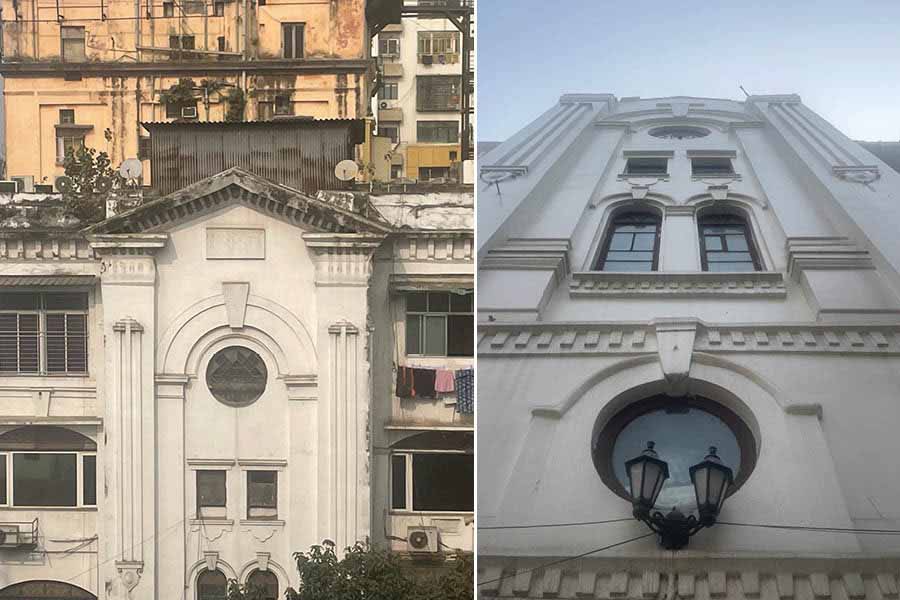Perhaps no part of south Asia possibly has a concentration of colonial architecture in terms of value per square inch, at the level of Kolkata’s B.B.D. (Benoy Badal Dinesh) Bagh, which is often recalled in a single word, ‘Dalhousie’. This patch of Calcutta ruled the world (almost); this patch still reflects the jaah-o-jalaal of the world’s largest empire; this patch is a time-warp where if you plucked 1500 cc cars off the street and planted some angrez, you might think it was 19th-century Calcutta once more.
The irony of Dalhousie is as extensive as the splendour. Few heritage locations this side of the world have been as disorganised in their presentation, documentation, celebration and tourist facilitation. There is no one raising a flag for Dalhousie to be included in the UNESCO World Heritage List, there is no one who is conducting a regular and dedicated walking cum study tour of monuments, and there is no one who has even ventured to curate a common interest group of Dalhousie structure owners.
In this column I will attempt to do what no — okay, make it few — heritage walkers have attempted: take readers on a tour of Dalhousie, as seen from the inside.
Raj Bhavan
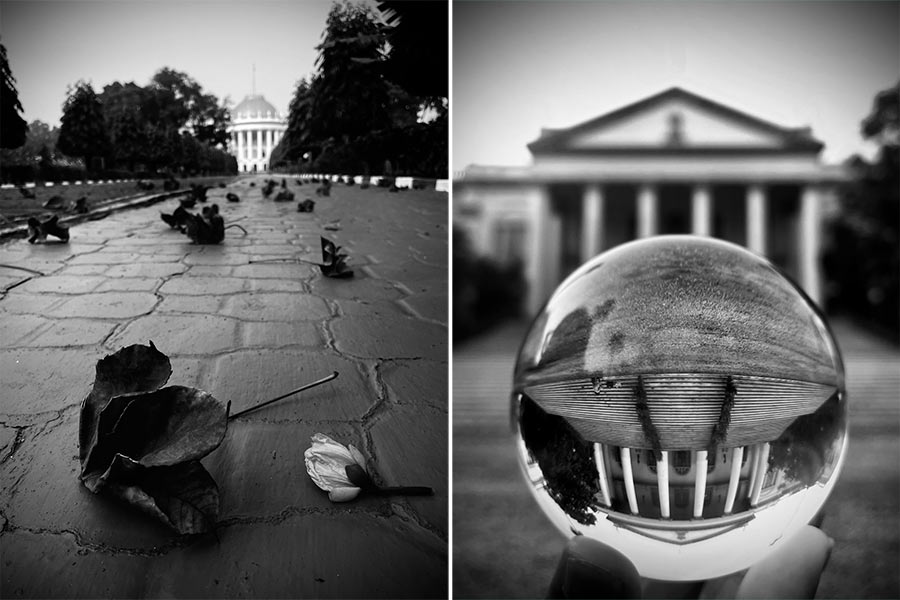
Raj Bhavan in Calcutta was pretty much the most politically electrical centre in the world, outside of London
Let us start with the markaz of Dalhousie – the home of the viceroy that later became the home of governors in independent India. When you stand outside the large silver-grilled gates of this 1805 magnificence, remember that for nearly ten decades through the 19th century, this central Calcutta edifice was pretty much the most politically electrical centre in the world, outside of London. This 27-acre sprawl presided over a sub-continental colonial property that extended from the edge of Afghanistan in the west to Burma (Myanmar) in the east and from Kashmir in the north down to the southern tip of the Indian landmass. The papers that became law were cleared here; the nod of the head that made it possible for kingdoms to be annexed took place in its rooms; possibly the largest sustained wealth transfer of the world was conceived within its walls. And there are few who have the permission to take awe-struck tourists — there is so little of RB that we have seen that technically all Kolkatans are tourists — inside and paint the narrative.
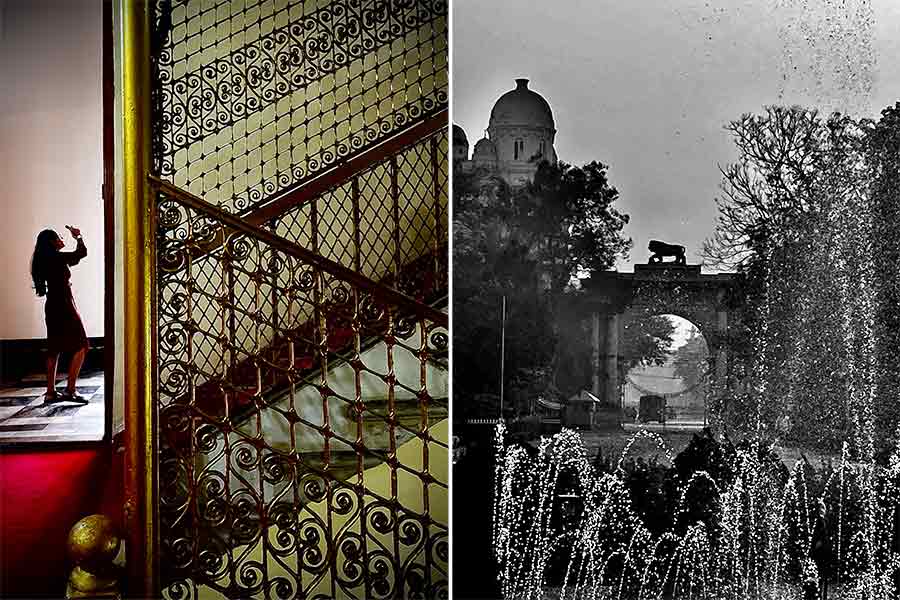
he silence and spacious grandeur of Raj Bhavan can be arresting
The silence and spacious grandeur can be arresting; there is a photographer in me who specifically asks for the lights switched off when prowling through the extended halls where one comes across possibly the longest table anywhere, the oldest elevator in Asia, and the old ‘this’ and the most precious ‘that’, as matter of routine. The afternoon casts slanted shadows across the chequered mosaic and tree branches curve around the architecture when seen from a distance; the erratically vertical fountain crests in the afternoon light and that one long shot from ground level at the southern gate indicates a miniaturised facade. I would like to go back to Raj Bhavan with nothing more than my humble iPhone except that the Governor’s secretary just doesn’t respond to my emails any longer.
AG Bengal
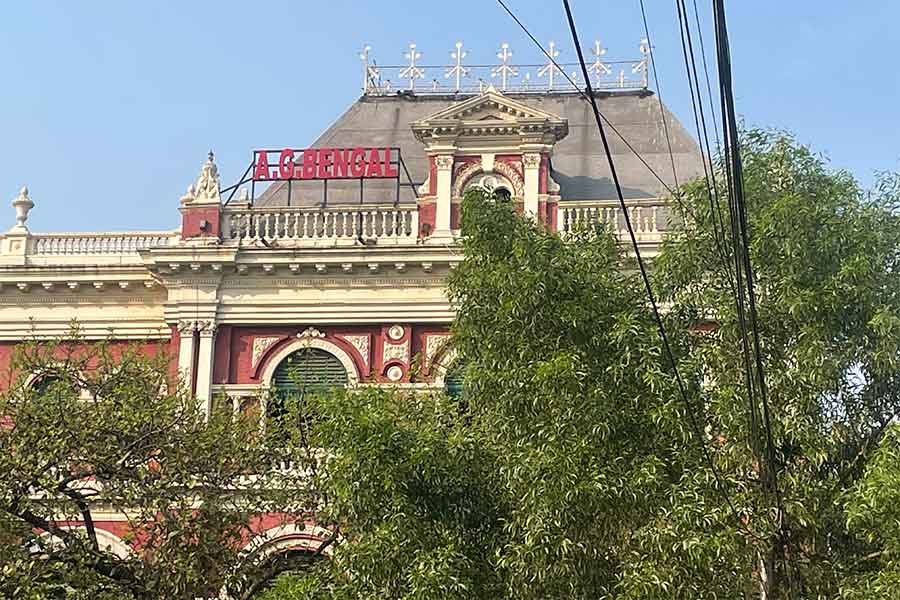
AG Bengal is the kind of address where you could sleep in a different room each day and not repeat for an entire season
Beyond the western Raj Bhavan gate is a block of a red building; a giant block that is. This block extends from the road of the Town Hall to Kiran Shankar Roy Road at the back — and it is all one building. It is the kind of address where you could sleep in a different room each day and not repeat for an entire season. When one is driving from Akashvani Bhavan into Dalhousie, it is impossible to miss the red AG Bengal signage (typographically mismatched with its grandeur), the angled dome (not the usual curved), the extended metal grill on top of the dome and the designed friezes on railing corners. This grand structure could be illuminated more precisely; the uplighters on the first floor scarcely reach the most presentable end (the terrace). The inner building architecture is a head-turner if you are sitting in the Accountant General’s office who keeps his windows open.
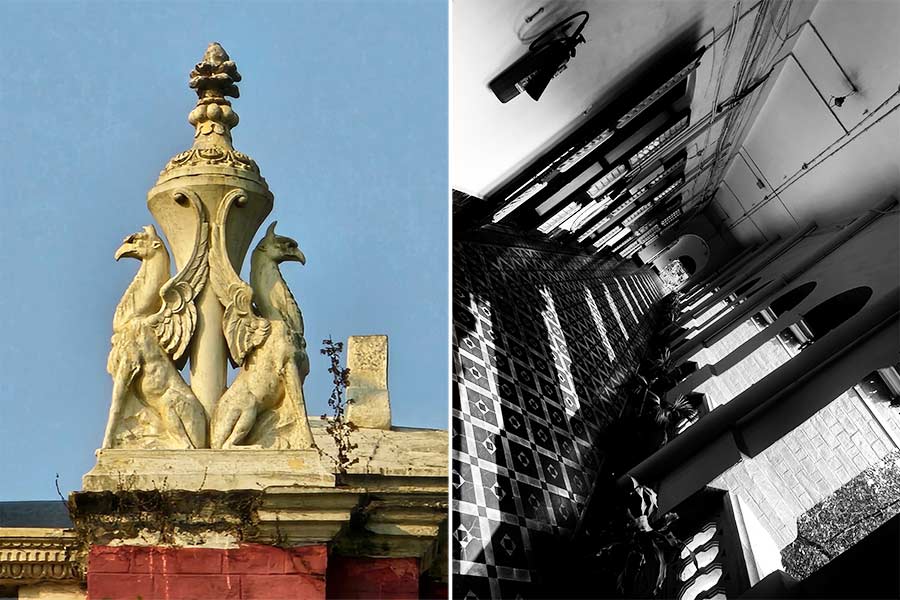
Dobody seems to know the room in which toiled C.V. Raman, Asia’s first science Nobel Prize winner for ten years
My big complaint is that nobody seems to know the room in which toiled Asia’s first science Nobel Prize winner for ten years (somebody called CV Raman, if you must know) and there is a whisper that the first President of India to come out of Bengal (go figure out who) also worked in one of these rooms that nobody seems to know. We should be collectively ashamed. When I went there last week, I missed my afternoon appointment timing by three minutes because I tried to get the right corridor angle into my smartphone. If the CAG could write to the Municipal Commissioner to trim the tree overgrowth, there may be some hope of stealing a glance of the imposing 1880s facade. At least in our lifetime.
Royal Insurance Building
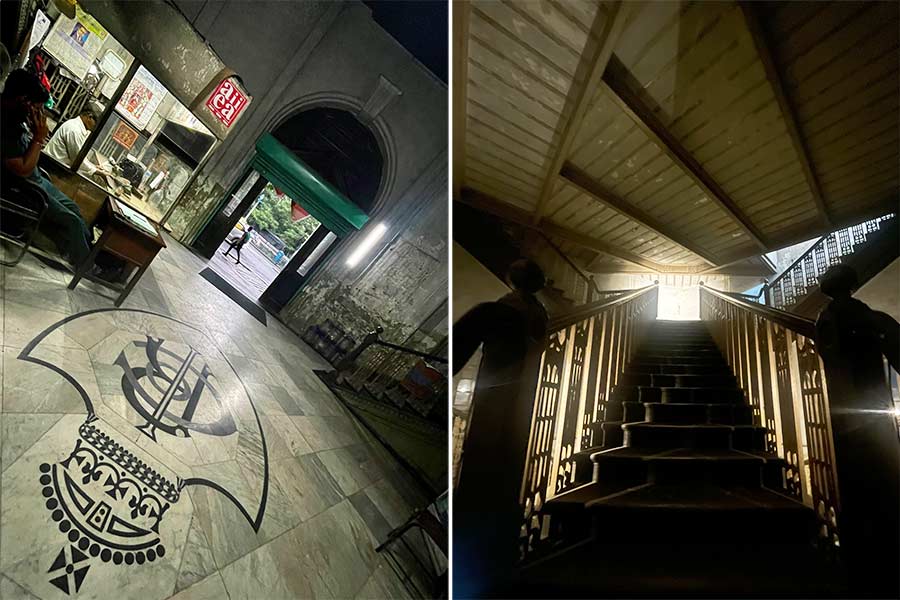
The 1902 structure of the Royal Insurance Building is often identified by the prefix ‘the one beside the GPO’,
This 1902 structure, often identified by the prefix ‘the one beside the GPO’, stands out for these reasons: the sheer spread, as it goes all the way round from NS Road to the GPO lane (sad that I should not even know what it is called) and then the first left into Bankshall Street; the pink-red and yellow of the facade, which is of a kind that I have not seen anywhere in the city — heritage architect Partha Ranjan Das says, “This is the best building of its kind in Calcutta”. The spine of the building covered by a periodic tree manicure; the central door being rated among the 50 most compelling in the world (hearsay); the symmetric wooden staircase inside as an excellent excuse to sneak up to the second floor and experiment new smartphone treatments; the royal insignia stamped on the ground floor marble that deserves eviction of the security officer’s overlying table; and the illuminated spectacle post-dusk. A word of appreciation here for the property owner (National Insurance) for moving paper and getting illumination permissions cleared with speed.

The building is an illuminated spectacle post-dusk
If only the National Insurance trade unions would pass a resolution that banned any of its members from pasting handbills on the marbled columns out of a sense of architectural pride, I promise to go and bow in his or her presence.
Standard Assurance Building
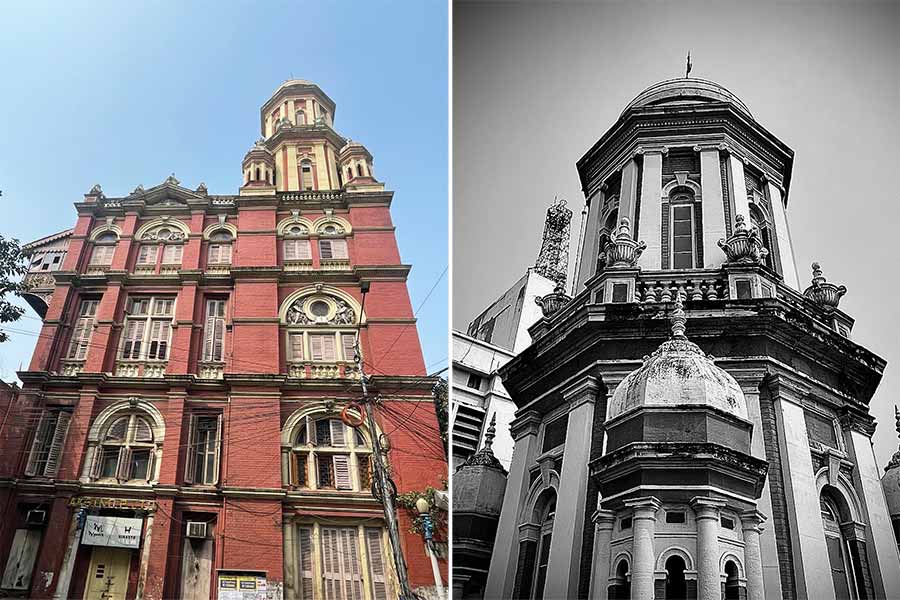
The unique facade of the Standard Assurance Building is embellished with marble statuettes
This red brick structure is at the corner of the road coming directly across the northern gate of Raj Bhavan (I could have alternatively said ‘across the hideous Telephone Building’). The structure needs to be appraised with fursat. I have seen domes above buildings but possibly never a dome surrounded by satellite domes or even a multi-tiered dome as its own version of a compacted Mughal monument. The facade is embellished with marble statuettes. Two parts of the building are joined with an arch and on the side of that large arch are statuettes again, this time foretelling omens of prosperity and death, which was perhaps indicative of the business that ran within. It is only when one rises to the terrace (through offices) and sizes up the dome that one gets its splendour. There used to be a metal halogen directed at the dome in the past but that has been long disconnected. The time has come for every statuette within those arched windows to be illuminated; the time has come for every dome and sub-dome to be washed each evening in warm yellow; the time has come for a traffic jam at 10pm across the road with motorists focusing more on the facade than the road.
St Andrew’s Church

St Andrew’s Church presents a remarkable instance of a road being adapted around a structure
If anyone had given me small play money to transform the city, I would have submitted a facade illumination proposal to the presbyter at St Andrew’s Church. Because there is no structure in Kolkata with as compelling a line of sight. I have heard of structures being adapted around roads, but this is a remarkable instance of a road being adapted around a structure. The result is that St Andrew’s can be seen from as far as Red Road in the south and from Portuguese Church in the north. Based on its potential, The Kolkata Restorers (an anonymous group of heritage activists) got the four-faced clock below the spire operative after years at its private expense. The clock chimes every 15 minutes followed by the hourly gong, bringing into currency a sound lost across the decades. By the time the next edition of this column appears, St Andrews is likely to be illuminated as well, setting the city’s tone for all those who come weary from Howrah Station and for all those entering Dalhousie from the south. That would be a battle won for the shaan-o-shaukat of Dalhousie.
Hongkong and Shanghai Banking Corporation
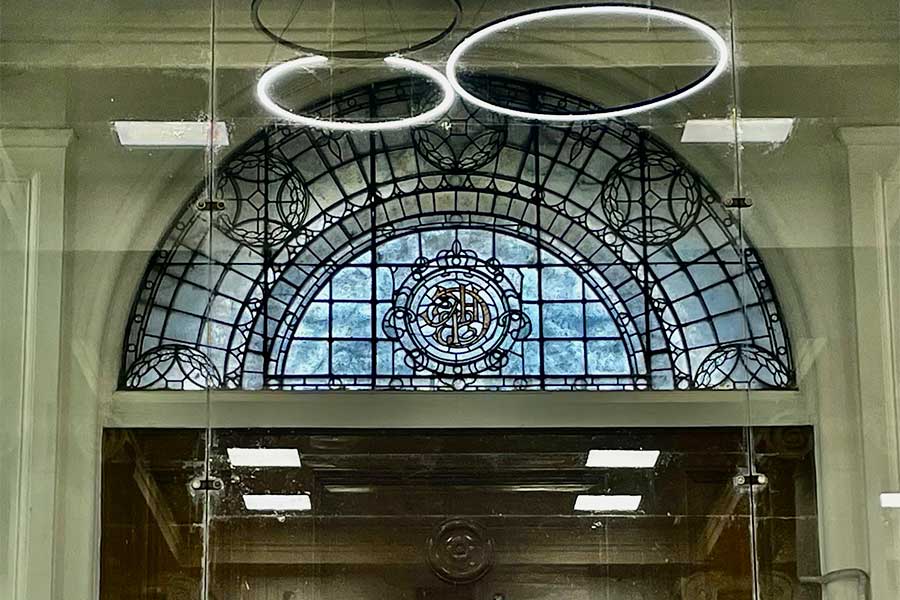
The Honkong and Shanghai Banking Corporation is an edifice that influenced the fortunes of nations and races from the middle of the 19th century
This edifice influenced the fortunes of nations and races from the middle of the 19th century, funding the opium trade that went deep into China (giving rise to the name of the bank and this structure). The bank has posted pictures of how the structure looked in the past on the website, which is one step forward in the heritage play. Maybe it will extend this play by back-illuminating its stained glass sequence on the ground floor, maybe it will invite heritage walkers on a conducted weekend tour of its premises, maybe it will indicate the room where the opium would be auctioned and maybe it will permit sketchers to sit knees folded and backs against the walls on floors to visualise a day in the bank a hundred years ago.
Someone said the other day that all Calcutta has left are memories, which is a compliment for a city that should be described as the ‘Capital of Nostalgia’. This could be such a rich recall to own and live if we could only reimagine the neighbourhoods and showcase them. If we could get the world to gawk at their romance, stay in our hotels, patronise our service providers, carry memorabilia home and pass the word around that, “we went to this wonderful place called Dalhousie where we felt it was 1908 all over again”.
From this day onwards, I have appointed myself ‘Dalhousie Evangelist’. Looking for members.
